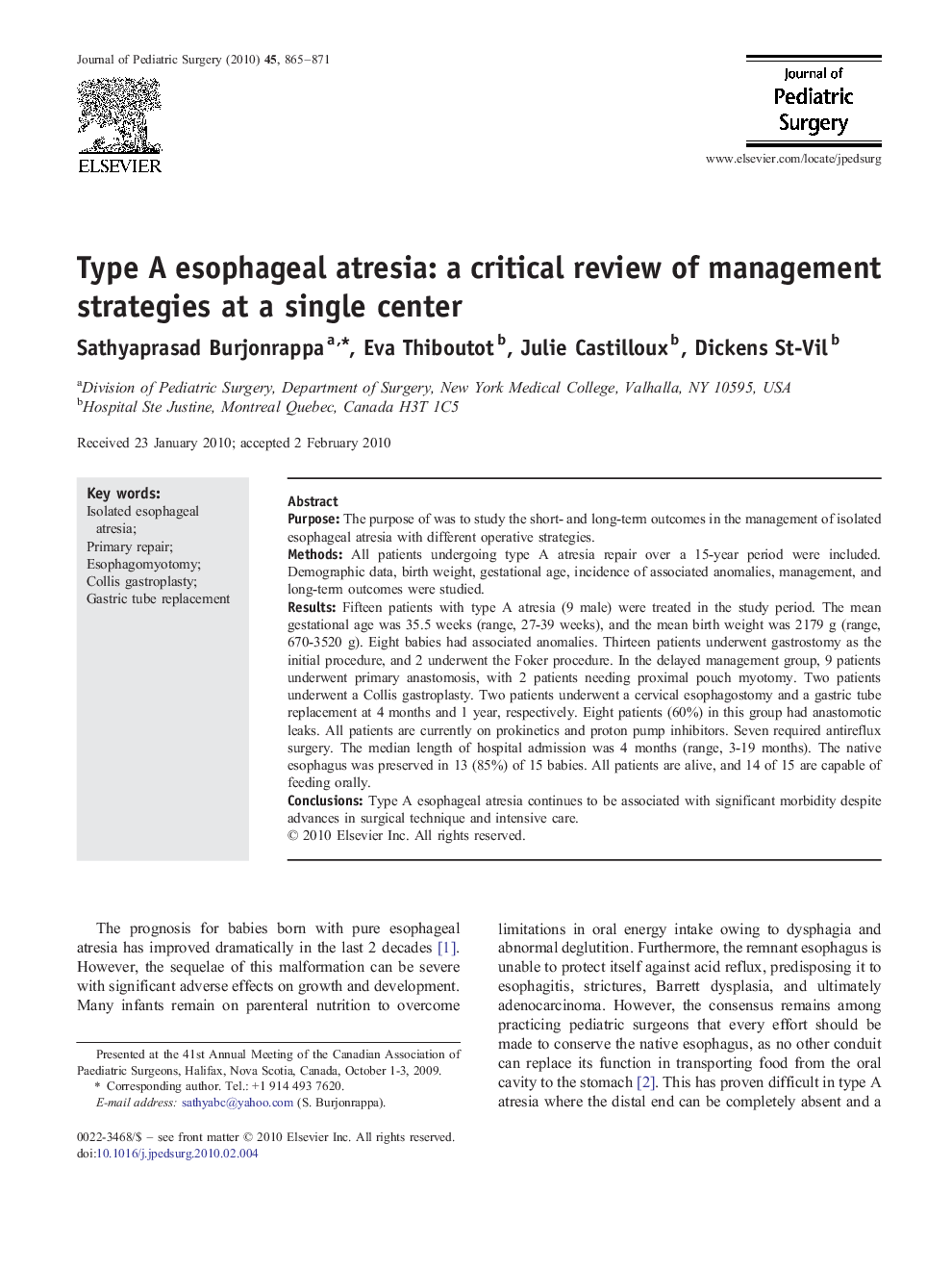| Article ID | Journal | Published Year | Pages | File Type |
|---|---|---|---|---|
| 4157735 | Journal of Pediatric Surgery | 2010 | 7 Pages |
PurposeThe purpose of was to study the short- and long-term outcomes in the management of isolated esophageal atresia with different operative strategies.MethodsAll patients undergoing type A atresia repair over a 15-year period were included. Demographic data, birth weight, gestational age, incidence of associated anomalies, management, and long-term outcomes were studied.ResultsFifteen patients with type A atresia (9 male) were treated in the study period. The mean gestational age was 35.5 weeks (range, 27-39 weeks), and the mean birth weight was 2179 g (range, 670-3520 g). Eight babies had associated anomalies. Thirteen patients underwent gastrostomy as the initial procedure, and 2 underwent the Foker procedure. In the delayed management group, 9 patients underwent primary anastomosis, with 2 patients needing proximal pouch myotomy. Two patients underwent a Collis gastroplasty. Two patients underwent a cervical esophagostomy and a gastric tube replacement at 4 months and 1 year, respectively. Eight patients (60%) in this group had anastomotic leaks. All patients are currently on prokinetics and proton pump inhibitors. Seven required antireflux surgery. The median length of hospital admission was 4 months (range, 3-19 months). The native esophagus was preserved in 13 (85%) of 15 babies. All patients are alive, and 14 of 15 are capable of feeding orally.ConclusionsType A esophageal atresia continues to be associated with significant morbidity despite advances in surgical technique and intensive care.
